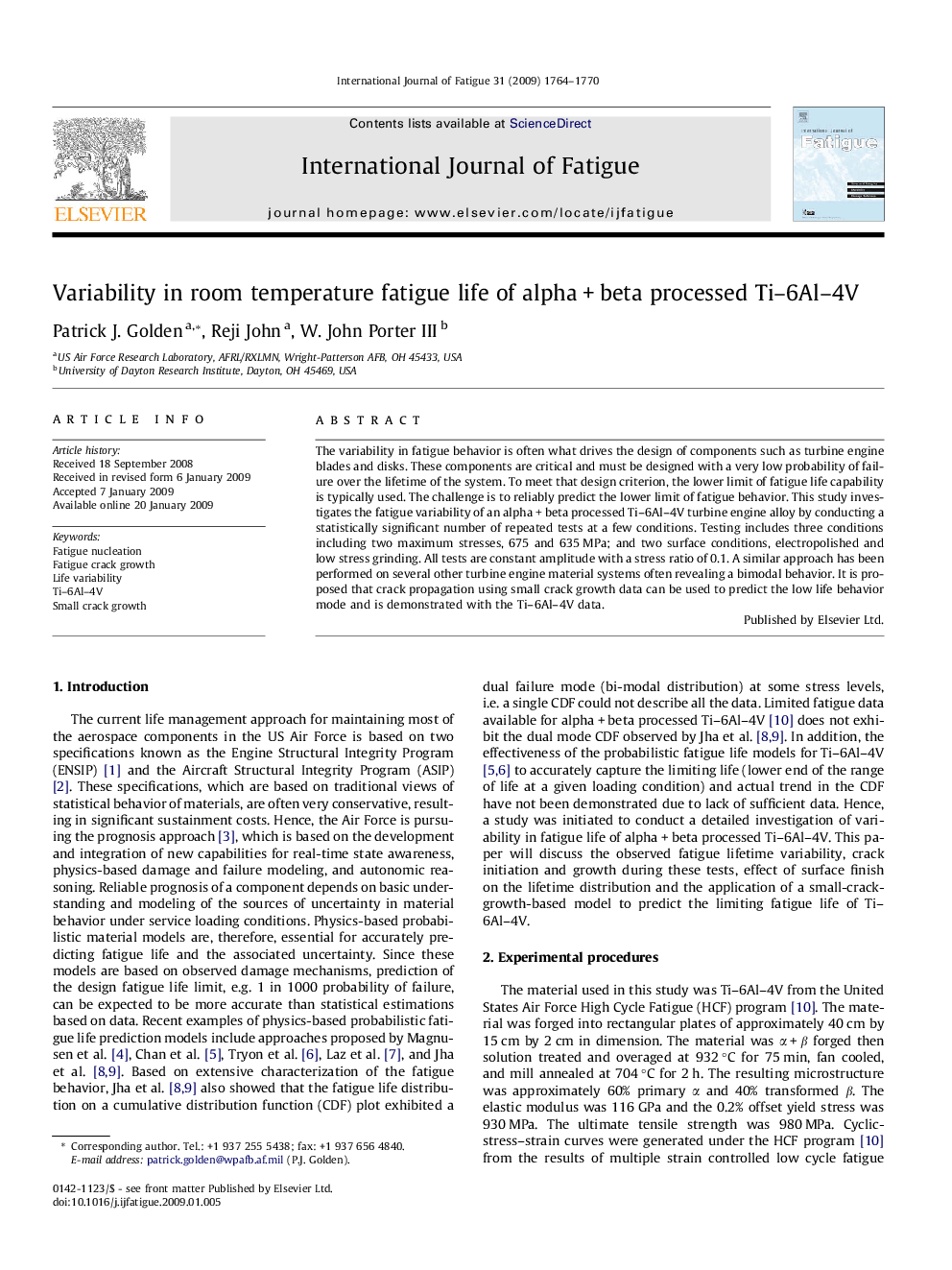| Article ID | Journal | Published Year | Pages | File Type |
|---|---|---|---|---|
| 775650 | International Journal of Fatigue | 2009 | 7 Pages |
The variability in fatigue behavior is often what drives the design of components such as turbine engine blades and disks. These components are critical and must be designed with a very low probability of failure over the lifetime of the system. To meet that design criterion, the lower limit of fatigue life capability is typically used. The challenge is to reliably predict the lower limit of fatigue behavior. This study investigates the fatigue variability of an alpha + beta processed Ti–6Al–4V turbine engine alloy by conducting a statistically significant number of repeated tests at a few conditions. Testing includes three conditions including two maximum stresses, 675 and 635 MPa; and two surface conditions, electropolished and low stress grinding. All tests are constant amplitude with a stress ratio of 0.1. A similar approach has been performed on several other turbine engine material systems often revealing a bimodal behavior. It is proposed that crack propagation using small crack growth data can be used to predict the low life behavior mode and is demonstrated with the Ti–6Al–4V data.
